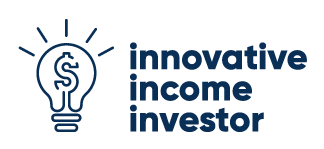So at 5 pm central the futures markets open and the index went to minus 4-5% instantly. Honestly a drop that is less than it could have been.
Given that only a limited number of tariffs have kicked in the entire fall is not justified (in my mind). I think negotiating will start in earnest tomorrow and with the exception of China many deals will be made in the next few days. Will all be OK–no of course not, but calmer heads will prevail.
Under no circumstances will I sell anything—but if bargains appear (bigger bargains) I will do some buying. I only have about 10% cash–almost all in money markets at this moment.

Vietnam has reportedly offered 0% tariffs. They want the trade imbalance between the 2 countries narrowed. Here are some numbers from economist, Peter Boockvar.
“For some reason, Vietnam continues to get beat up for its trade deficit with us. They send about $110b worth of goods to us while we send just $13b to them. But Vietnam is a country with a per capita income of about $4,000. What exactly can they afford to buy from us? Many there literally work 7 days a week making $10-15 a day and we’re worried about our trade deficit with them? As more wealth is created there, they will buy more stuff from us but tariffs on them at a punitive rate will wreck their economy instead.””
So much for the narrative that this was a negotiating tactic from Trump. This administration’s position is irrational.
I lived through this with IT offshoring. Initially, our companies all piled into India due to cheap labor rates. This has happened with Vietnam. Apparently, lots of companies outsource to a small country for very cheap labor rates. The solution was always to change our tax policy so companies paid a punitative tax assessment for doing this.
So, the Vietnam offer of 0% is confirmed by the Trump administration.
If this were a negotiation, you would have agreed with reduced tariffs and paused the increase on Vietnam for X months. Then, you would have negotiated controls to make sure any concerns you had related to a trade imbalance were mutually agreed upon. Anybody in the “real world” understands that resolving a trade imbalance takes time.
They do not want to resolve this matter quickly.
https://www.cnbc.com/2025/04/07/peter-navarro-says-vietnams-0percent-tariff-offer-is-not-enough-its-the-non-tariff-cheating-that-matters.html
I should be relaxing but at 8 PM on a Sunday I am sitting here with paper and pen making a shopping list. I created 3 brackets: high yield, elevated yield with a reasonable risk, and a stupid safe yield which might be > 6.5% if the price drops.
If I wanted a pretty darn safe 6% yield spread over several names I could have done that anytime over the last months. Which I did for a piece of the portfolio. But now I am hunting for bargains.
Lets see what happens tomorrow and Tues!
Negotiating when your stock market is significantly dropping every hour is hardly negotiating from a position of strength. Some of you may believe that this is a good strategy. I do not agree. I think it is a bad approach.
What follows is my opinion and analysis of the SP500. Due your due diligence (DYODD) and decide for yourself. This is not a recommendation for anybody.
My research (DYODD) is that the SP500 earned $232.22 over the last 12 months. A PE range that is considered by many analysts to be fair is 18-20
If you assume no growth in earnings for the next 12 months, you get a range of 4,176 (PE 18) to 4,645 (PE20). Certainly, some sectors like utilities, telecom, and maybe health care may increase earnings. Others, like technology, consumer discretionary, and industrials, may well not meet last year’s earnings levels. So, is the same overall earnings as the last 12 months that bad an assumption? Each of us needs to decide.
Of course, this is for non recessionary times. During a recession, the SP500 earnings will drop year over year. And the historical PE ratios is 12 – 14.
So, to me, a drop of the SP500 from 4,200 to 4,650 would not be excessive and can be justified.
Right now, I have no plans to buy or sell. If I miss a bargain, that’s ok. I think it is close to impossible to sell at the top or buy at the bottom.
SteveA-
I’m in that ballpark for now- a backfill on a gap in the chart is ~4400.
But- I’m not techie, so it may get worse or better.
Yield on the 10 year seems to be rapidly falling. Any correlation with preferred stocks? Just a question.
yes. Preferreds are a mix of equity + bonds.
So the interest rates matter.
What if the increased tariffs cause the firm to go bankrupt – then you don’t get money back.
if inflation heads up, the current yield may not compensate for the risk and the company may never redeem the preferred so one may see a two way loss.
It may be smarter to sit a while and see where things fall – invest in 2 year treasuries or CDs or Money Markets and you are guaranteed 3% + return of capital.
Generally, preferred stocks inversely correlate with interest rates except when there is panic selling in the markets.
“Will all be OK–no of course not, but calmer heads will prevail.”
I hope you’re right, but at the same time, hope is not a valid strategy. The only “head” that matters is Trump’s and when was the last time he had a calm head? I’m not a seller, but I am definitely anxious about next week.